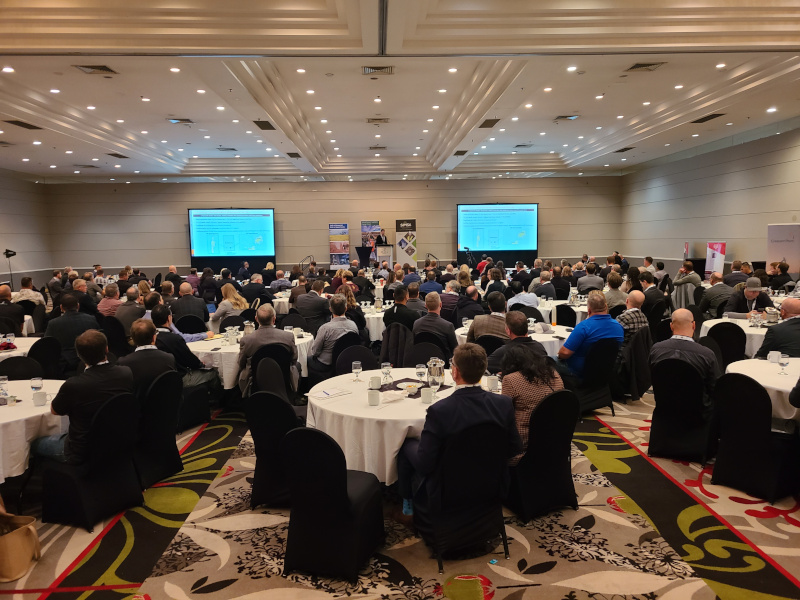The Saskatchewan Industrial and Mining Suppliers Association
A key player in Saskatchewan’s business development
Connecting suppliers with the province’s major industry sectors
Based in the province of Saskatchewan that has no shortage of agricultural riches as well as natural resources ranging from uranium, oil, and gas, coal to base metals and potash, The Saskatchewan Industrial and Mining Suppliers Association (SIMSA) provides a much-needed voice for these booming economic sectors.
A non-profit trade organization that represents over 340 Saskatchewan-based supplier members, with over 34,000 employees, SIMSA provides goods and services to the industrial, mining, and energy sectors within the province and beyond. The association also works to build sustainable, productive, and transparent relationships among its members, their customers, government agencies, and all other stakeholders. SIMSA actively markets its members to procurement professionals through in-person events and its proprietary supplier database.
Making corporate connections
SIMSA’s database was developed about six years ago, based on a request from BHP, an international mining firm that was originally founded in Australia in 1885 and, which, today, is the largest mining company in the world. BHP recently invested about $17 billion in the construction of a potash mine approximately 87 miles east of Saskatoon, known as the Jansen Potash project.

Eric Anderson
“They needed a local supply chain, so we built a supplier database for them, as well as other companies, to sort and secure suppliers,” notes Eric Anderson, SIMSA’s Executive Director. “It’s a live dashboard, and it’s free for people to use. And, to date, BHP has done over 40,000 searches on it.”
SIMSA has another successful partnership with an additional company on the other side of the globe. “We work a lot with Cameco, whose world headquarters is based in Saskatoon,” Anderson shares. “They introduced us to the government of Kazakhstan, which also has potash deposits that they’re interested in developing. They have potash, uranium, and agriculture, just like we do here, so it’s a natural fit. We’ve done several events with Kazakhstan and they’re wonderful people to work with.”
In a bid to be more proactive in matching suppliers to companies, in 2021, SIMSA developed the position of Industrial Concierge. “The Industrial Concierge services were created to provide the communication path between the mining companies and the supply chain,” Anderson explains.
Today, Industrial Concierge, James Bulmer, investigates the needs of interested companies and finds out what innovations they may require. “Then, he goes into the supply chain to find vendors that may have them, or brings people together to train our members on how to develop those innovations in the first place,” Anderson adds. “The other piece of his work is carbon reduction — helping our members reduce their carbon footprint.”

Growth during COVID
Unlike some sectors, which contracted during the COVID-19 pandemic, the industries served by SIMSA were considered essential, and, as a result, the association’s membership grew from 206 in 2019 to over 340, today.
“During the pandemic, fertilizer production needed to continue – that’s potash,” Anderson explains.
“Uranium is fuel for nuclear power and the power grid had to keep running. We also helped with the production of oil and gas, helium, lithium, etc., so those had to continue, and we also provided goods and services to maintain things like the industrial links to the power grid itself, so we kept doing that.”
At the same time, SIMSA had to adapt to the constrictions imposed by the pandemic, so by necessity, it evolved by becoming digital.
One of the things we did early on during COVID was to teach our members how to be successful in the digital world – how to hold a ZOOM meeting and how to create digital marketing and communication tools,” Anderson recounts.
“We also became a hub of information with constant meetings with the federal and provincial governments on supply chain issues. So, we became invaluable to the members that we serve.”
Virtual meetings and live events foster success
Now that SIMSA has achieved a level of digital proficiency, it has added virtual meetings to its roster of in-person events. “We found that virtual events have a wonderful place in the world; especially when they’re shorter and quicker, and you want to keep costs down and pass along some information,” says Anderson.
“We use them a lot; they’re a great asset, especially in Saskatchewan. It’s a big province and it takes a lot of time to get from one place to another.”
The association’s traditional live events generally occur when a major resource company sends a complement of its top purchasing agents to meet with SIMSA members. “They’ll talk about what they need, what they’re going to buy, how they’re going to do it, and then we’ll set aside time for one-on-one conversations between the procurement executive and the supply chain,” Anderson relates.
“We also run forums and trade shows. We’ll have 380 trade show booths with a couple of thousand delegates to keep a focus on buyers and sellers, fact-to-face. They’re very successful events.”
SIMSA’s success across the board was legitimized by a study it commissioned from PricewaterhouseCoopers, the professional services firm that quantified that there is four-times as much economic impact for the province when companies buy goods and services from local suppliers rather than from those outside of Saskatchewan. “It became kind of a benchmark because we could finally say, ‘Spend locally; it’s this much more money into the provincial government and/or the people of Saskatchewan,’” Anderson shares. “So, that was a big impact.”
The dive into nuclear power

Tom Kishchck
Most recently, SIMSA has delved more heavily into the nuclear field by hiring Tom Kishchuk as its Nuclear Specialist. “I joined SIMSA in 2023 after a career in power generation,” Kishchuk recounts.
“I was a founding employee for Hitachi’s first manufacturing facility outside of Japan for power generation, including nuclear power. We were part of the nuclear supply chain and were active in projects in the U.S. and Japan.”
“I’m now using that experience to understand the technology that’s being developed in the province for nuclear power and then translating that information into a language that can be understood by our members and by the supply base in Saskatchewan, so they can understand what the opportunities are in relation to their specific capabilities for fabrication, welding, machining, coating, inspection, environmental services, construction, etc. – the whole package.”
According to Anderson, Saskatchewan currently leads the country in job creation and GDP growth with a projection of over $50 billion in new projects potentially coming to the province over the next ten years in mining, agricultural processing, and especially, nuclear power generation. Those projects could generate approximately 150,000 jobs, so creating that new workforce is a top agenda item for the association. “We don’t have 150,000 unemployed people in this province,” he states.
“We’re developing strategies and tactics to produce the workforce that’s required. We’re working with school teachers to get kids interested in the trades and engineering. At the junior high and high school level, it’s getting kids involved in work studies, some time in the shop, and then national and international competitions to foster their interest and grow their abilities. There’s already a lot of activity going on, and we’ll continue that activity and focus it toward nuclear power as we move ahead.”
“Everything is achievable,” Kishchuk adds. “We have the land; we have the infrastructure here; we have the schools at the trade and engineering level to support the development of manufacturing and construction that would be required to manufacture components and to build nuclear power plants. There’s a good foundation to build off with the right investment and the right commitment in terms of policy from government and others to support the industry in the Province of Saskatchewan.”
Building with First Nations
Finally, Anderson says that another key focus for SIMSA is building capacity with First Nations, and as an example, developing the indigenous labor force for work in the incipient nuclear sector.
“One of our great partners is the Saskatchewan First Nations Natural Resource Center of Excellence,” he says.
“They’re a great group and we work with them a lot. The nuclear field is a brand new field of business where, if we work together, we can capture more of it. So, it’s a wonderful opportunity to foster that relationship with our First Nations partners. Also, a lot of our members are First Nations companies, so the nuclear piece is a natural fit.”
AT A GLANCE
The Saskatchewan Industrial and Mining Suppliers Association
WHAT: A non-profit trade association
WHERE: Saskatoon, Saskatchewan Canada
WEBSITE: www.simsa.ca


